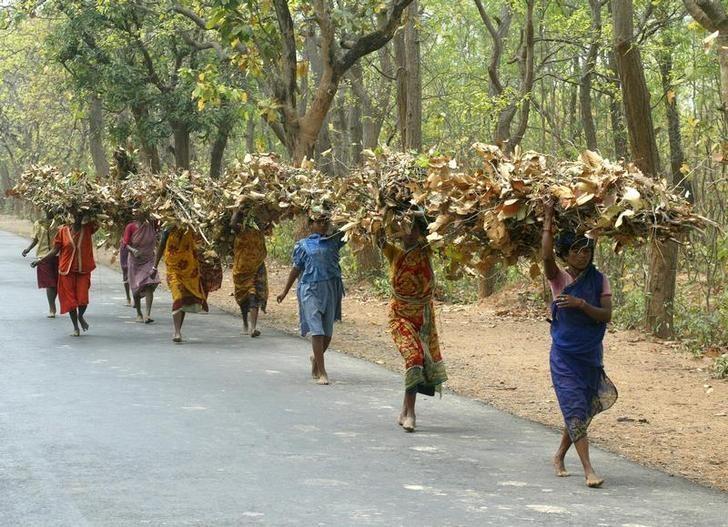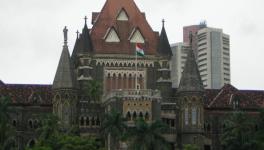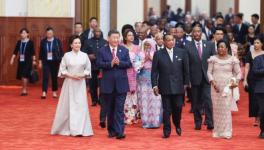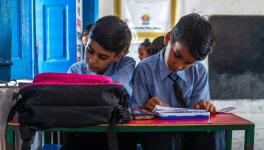Decentralised Politics, Centralised Power: Perspectives from Below

Representational Image. Image Courtesy: Reuters
India’s economy must be set up in such a way that none suffer from want of food and clothing. Every citizen should be able to get sufficient work to enable them to make ends meet. All over the world, governments are beginning to recognise that the environment is critical to achieve this goal. And, long before environmental protection became a buzzword, India’s tribes, from forest dwellers in Uttarakhand to Bishnois in Rajasthan, were fiercely protective of their natural environment; the aim being self-dependence. One hardly comes across instances where tribals invade villages or towns to satisfy their material considerations. Rather, in the rapid quest for “development”, cities and urban life have encroached into lands which for millennia were tribal communities’ source of sustenance.
In the process, vices such as alcoholism and drug addiction were introduced, and tribals driven into the clutches of moneylenders after demand was first created among them for items they did not need. It is no wonder that tribals distrust outsiders, and generally perceive them as exploiters and encroachers. Tribal struggles for their inalienable rights over forest lands is a manifestation of their desire to lead independent lives.
Centralisation of governance
The concentration of power in a single authority, as opposed to distributing powers among different organs of the state—a top-down as opposed to bottom-up approach—has been adopted by India in the context of development. It is well known that India’s federalism is marked by a strong Centre with regard to policy formulation and implementation. The Union prevails over states, sometimes encroaching into the State List, but more often into the Concurrent List. For instance, central institutions and ministries such as the Planning Commission (now NITI Ayog), the Finance Commission and the Ministry of Rural Development, are crucial to policy formulation and implementation. Each of these gives the Centre an upper hand in overall governance.
As a result, there is growing conflict in how the Centre and states share power and resources. The power relation that the Constitution guarantees had aimed for the development of the entire country. Part XI of the Constitution, for example, institutionalises legislative and administrative relations between the Union and states. [Economic and social developmental plans come under Entry 20 of the Concurrent List.] Yet, a variety of factors have given rise to centralised planning and administrative models, which have accelerated the Union into a powerful entity.
During the constituent assembly debates, Dr BR Ambedkar, Jawaharlal Nehru and others proposed exclusively centrist policies to meet the immediate socio-economic and political crises that arose after India’s independence. Further, in practice, the Centre ignored the states to a significant extent. In numerous cases, it tried to balance the growing resultant conflicts by evolving institutions such as for local self-government. Also, whenever Centre-state conflicts significantly challenged the established hierarchy, new means were sought to analyse the failure rates of various social welfare policies.
India established the Balwant Rai Mehta Committee (1957), the Ashok Mehta Committee (1977) and then the Sarkaria Commission (1983). After the recommendations of the Sarkaria Commission, the Union government passed the 73rd amendment that gave constitutional status to Local Self-Government (LSG) in 1992. Even after the next, 74th, amendment, the transfer of funds, functions and functionaries has been nominal in most states, with notable exceptions such as Kerala.
Yet the growth of self-governing local bodies as the third tier of governance has also been uneven, halting and slow. The Second Administrative Reforms Commission observed that there is no clear delineation of the roles of the states and local governments. There is also no clear functional delineation among the various tiers of local government. Due to undue interference from higher echelons of government, local governments are unable to effectively wield power and frame or implement regulations.
A basic function of the Panchayati Raj Institutions is to implement poverty-alleviation programmes. As the powers of states weakened, implementation of the institutional systems of panchayati raj also weakened. This destabilised federal-state powers, and that has had a weakening effect on state authority.
Further, over time, the Union government has attempted to de-institutionalise existing structures in states, and this has minimised the role of the states. The state’s mediatory role in rural poverty-alleviation programmes was required to stop leakages in welfare measures. Now the Centre regularly undermines states and enters directly into district-level administration.
It is in this context that democratic decentralisation as a way to realise democratic values at the bottom level of a political environment gains relevance. Democratic decentralisation is a way for people to participate effectively in the processes that affect them. It helps test democracy at the ground level. Decentralisation is the backbone of democracy with the principal aim to improve the status of people. Democracy is meant to secure the partnership of people in the exercise of the sovereign power of the state and for people to participate in day-to-day governmental activities. Decentralisation of a democracy therefore requires representation of the popular majority, but it should include the local, the poor, the political and religious and ethnic diversities and tribal groups.
Development is not just about change but a continuous process of progress—change for the better—which has to be shared with the community and society. Therefore, it must flow alongside the values and capacity of a people, and also make sense to them. In other words, it must be culturally, socially, economically, technologically and environmentally suitable.
According to Gunnar Myrdal, development implies the upward movement of the entire social system in the economic and non-economic spheres include health, distribution of power and economic, social and political stratification in society. However, when development models followed until the 1950s and 1960s failed, ten global development experts met at Cocoyoc in Mexico in 1974 and set up a new agenda for alternative development and made a fresh declaration. Their declaration talked about the relationship between people’s participation and social and human development.
People’s participation
According to Michel Pimbert and Tom Wakeford, “Democracy without citizens’ participation is ultimately empty and meaningless.” This idea has existed since the ancient Greeks; Aristotle defined a citizen as someone who is entitled to participate in an office involving a deliberation whose ultimate aim is to make the city self-sufficient. In Rousseau’s view, participation was a process by which an individual developed empathy for another’s point of view and learned to take account of the public interest in order to gain cooperation.
Marx saw three phases of participation in a democracy; starting with the revelation that political activity is the universal duty of every citizen, the second concerns a move towards zeal for participation, which comes from a perceived duty to redress the imbalance between the power-holding elite and the mass of society; and the third is the involvement of the masses, moving them away from the socio-political concerns of individual welfare and towards heightening the movement for changes in the power structures to revolutionary proportions.
In a democratic setup, a decision cannot be imposed on citizens in an autocratic manner. People have the right to take a collective decision for a better life, to plan their future based upon their knowledge and ability. Lack of participation is akin to having a truncated membership in a community or society. If and until their participation is limited to choosing their elected representatives, citizen’s needs cannot fully reflect in policymaking.
Deliberative participation requires that the social non-elite, by themselves or with the elite, reflect together for the common good for which the majority has agreed. It includes the scrutiny and formation of values, including the relative importance of various processes and opportunities. People’s participation, in this way, strengthens their motivation for development.
Increased ease of implementation is important because it fosters political support for policy programmes and encourages groups and individuals to work wholeheartedly to make them fruitful. It also builds long-term commitment among different political parties. The process gets eased when more people from the grass-roots get involved, for this can build a better understanding between parties and reduce political controversies. A role in decision-making, planning, implementation, benefit-sharing and evaluation of local development programmes creates a healthy attachment of people in the process of development. Once they consider it their own programme, they are likely to participate in it wholeheartedly. A top-down model views people as objects of development, which is why perspectives from below are crucial to participatory development.
The author is head, Centre for Human Rights, Department of Political Science, University of Hyderabad. The views are personal.
Get the latest reports & analysis with people's perspective on Protests, movements & deep analytical videos, discussions of the current affairs in your Telegram app. Subscribe to NewsClick's Telegram channel & get Real-Time updates on stories, as they get published on our website.
























